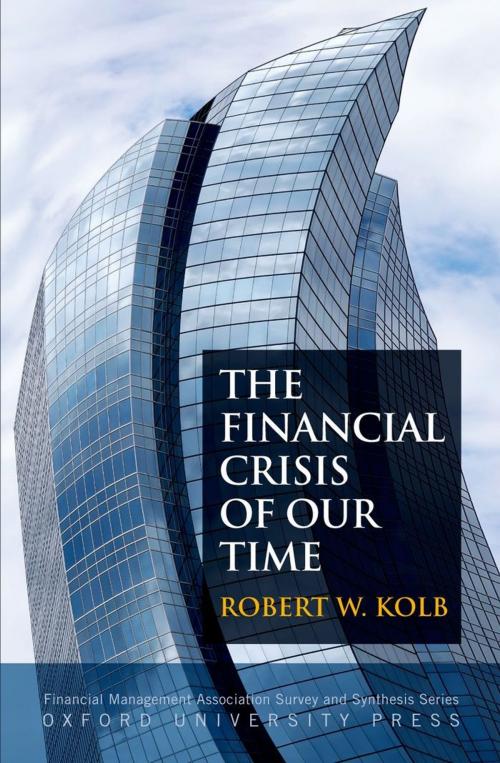The Financial Crisis of Our Time
Business & Finance, Economics, Economic History, Finance & Investing, Finance| Author: | Robert W. Kolb | ISBN: | 9780199792788 |
| Publisher: | Oxford University Press | Publication: | January 28, 2011 |
| Imprint: | Oxford University Press | Language: | English |
| Author: | Robert W. Kolb |
| ISBN: | 9780199792788 |
| Publisher: | Oxford University Press |
| Publication: | January 28, 2011 |
| Imprint: | Oxford University Press |
| Language: | English |
In 2006 residential real estate prices peaked and started to fall, then threatened the world's financial institutions in 2007, and confronted the global economy with disaster in 2008. In the past few years, millions of people have lost very substantial portions of their wealth. And while the markets have rebounded considerably, they are still far from a full recovery. Now, professional economists, policy experts, public intellectuals, and the public at large are all struggling to understand the crisis that has engulfed us. In The Financial Crisis of Our Time, Robert W. Kolb provides an essential, comprehensive review of the context within which these events unfolded, arguing that while the crisis had no single cause, housing finance played a central role, and that to understand what happened, one must comprehend the mechanism by which the housing industry came into crisis. Kolb offers a history of the housing finance system as it developed throughout the twentieth century, and especially in the period from 1990 to 2006, showing how the originate-to-distribute model of mortgage financing presented market participants with a "clockwork of perverse incentives." In this system, various participants-simply by pursuing their narrow personal interests-participated in an elaborate mechanism that led to disaster. The book then gives a narrative of the crisis as it developed and analyzes all of the participants in the housing market, from the home buyers to investors in collaterialized debt obligations (CDOs). At each step, the book explains in a nontechnical manner the essential relationships among the market participants and zeroes in on the incentives facing each party. The book also includes an extensive glossary and a detailed, authoritative timeline of the subprime financial crisis. Offering a unique look at the participants and incentives within the housing finance industry and its role in the biggest financial catastrophe in recent history, Robert W. Kolb provides one of the most comprehensive and illuminating accounts of the events that will be studied for decades to come as the financial crisis of our time.
In 2006 residential real estate prices peaked and started to fall, then threatened the world's financial institutions in 2007, and confronted the global economy with disaster in 2008. In the past few years, millions of people have lost very substantial portions of their wealth. And while the markets have rebounded considerably, they are still far from a full recovery. Now, professional economists, policy experts, public intellectuals, and the public at large are all struggling to understand the crisis that has engulfed us. In The Financial Crisis of Our Time, Robert W. Kolb provides an essential, comprehensive review of the context within which these events unfolded, arguing that while the crisis had no single cause, housing finance played a central role, and that to understand what happened, one must comprehend the mechanism by which the housing industry came into crisis. Kolb offers a history of the housing finance system as it developed throughout the twentieth century, and especially in the period from 1990 to 2006, showing how the originate-to-distribute model of mortgage financing presented market participants with a "clockwork of perverse incentives." In this system, various participants-simply by pursuing their narrow personal interests-participated in an elaborate mechanism that led to disaster. The book then gives a narrative of the crisis as it developed and analyzes all of the participants in the housing market, from the home buyers to investors in collaterialized debt obligations (CDOs). At each step, the book explains in a nontechnical manner the essential relationships among the market participants and zeroes in on the incentives facing each party. The book also includes an extensive glossary and a detailed, authoritative timeline of the subprime financial crisis. Offering a unique look at the participants and incentives within the housing finance industry and its role in the biggest financial catastrophe in recent history, Robert W. Kolb provides one of the most comprehensive and illuminating accounts of the events that will be studied for decades to come as the financial crisis of our time.















